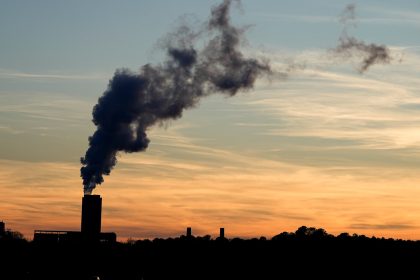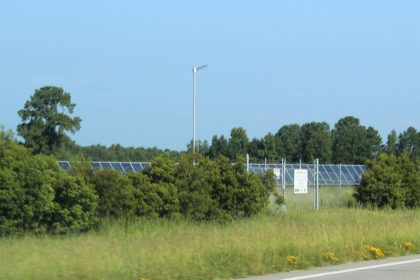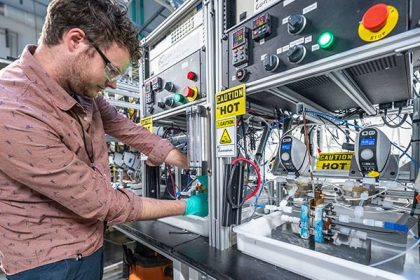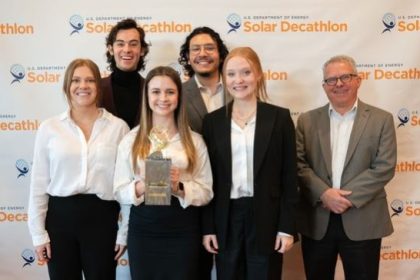Clean Energy Investments Are Boosting Hydropower, American Manufacturing
COMMENTARY
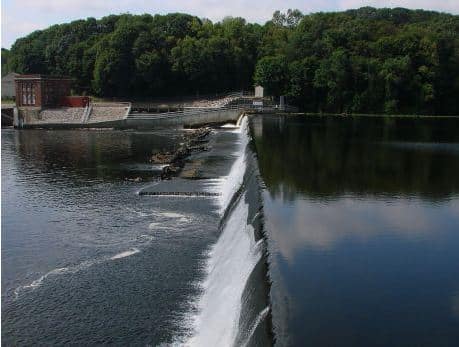
In October, leaders in the hydropower industry gathered in Cincinnati, Ohio, for Clean Currents, a conference dedicated to the world’s original renewable energy — hydropower.
Cincinnati was a fitting host; the largest domestic hydropower development this century took place on the Ohio River not too far from the city. Indeed, the fuel that creates clean, American energy literally flows through Cincinnati.
Attendees visited the Meldahl Hydroelectric Plant located about an hour southeast of the city. Fully operational since 2016, Meldahl is a joint venture between American Municipal Power and the city of Hamilton, Ohio, and the largest of AMP’s Ohio River projects, which generate more than 300 MW of clean energy and power hundreds of thousands of homes and businesses across AMP’s member communities.
Pennsylvania-based Voith Hydro proudly supplied the massive turbines and generators for AMP’s projects.
At the time of construction, AMP’s approach was novel: new hydropower development relying on American equipment, manufactured by American workers. It had been decades since there had been significant investment in new, large-scale hydropower. And when it came time to upgrade existing facilities, the equipment was often made abroad.
In reality, AMP was visionary. With the passage of the bipartisan infrastructure law and the Inflation Reduction Act, America committed itself to rebuilding and strengthening its infrastructure, in particular clean energy infrastructure. And with incentives that encourage domestic manufacturing, these bills also hold great promise for American workers.
Benefits for hydropower are myriad. Pumped storage hydropower — by far the largest source of utility-scale energy storage — gets a fresh look in the IRA.
There are new tax incentives for small hydropower projects, retrofitting non-powered dams and upgrading existing hydropower facilities.
The Advanced Energy Project Credit provides up to a 30% tax credit for businesses that invest in clean energy manufacturing technology, which is drawing considerable interest from across the supply chain.
In anticipation of a revamped hydropower sector, Voith Hydro is installing a new vertical turning lathe and a horizontal boring and milling machine in its more than 200,000 square foot hydropower manufacturing facility in York, Pennsylvania, a nearly $20 million investment. This investment will improve worker safety, energy use, production time and product quality.
American workers are winning, too. There are new “Buy America” requirements for public infrastructure projects (half of the U.S. hydropower fleet is owned by the federal government) that have long enjoyed bipartisan support in Congress.
Separate provisions make it harder for federal agencies to waive Buy America rules, something that happened too often and contributed to America’s previously dwindling manufacturing sector. The IRA includes a 10% domestic content bonus if developers source a significant portion of their content from products made in the U.S. This is a major incentive for projects that can cost hundreds of millions of dollars, if not more.
Early returns are positive. Growth in manufacturing-related construction has reached levels not seen in most of our lifetimes, more than doubling year over year. The Biden administration estimates the private sector has invested more than $200 billion in clean energy and clean energy manufacturing since the passage of these laws.
We are rapidly moving away from fossil-based energy in favor of cleaner alternatives needed to combat climate change. Of course, implementation will be key.
Efforts are underway to water down and undermine some of the domestic content requirements in these laws, eliminating one of the primary benefits — more good-paying jobs for people across the country — of these otherwise game-changing investments.
Congress and the Biden administration should hold firm on their commitment to American workers so the goals of the bipartisan infrastructure law and IRA are realized.
For now, there is reason for optimism. The United States is already benefiting from investments in clean energy and stands to gain even more in the coming years — an accomplishment that everyone in the hydropower industry is proud to celebrate.
Stanley Kocon is president and CEO of York, Pennsylvania-based Voith Hydro, one of the world’s leading suppliers of hydropower turbines, generators and automation equipment. He can be reached on Linkedin.




















